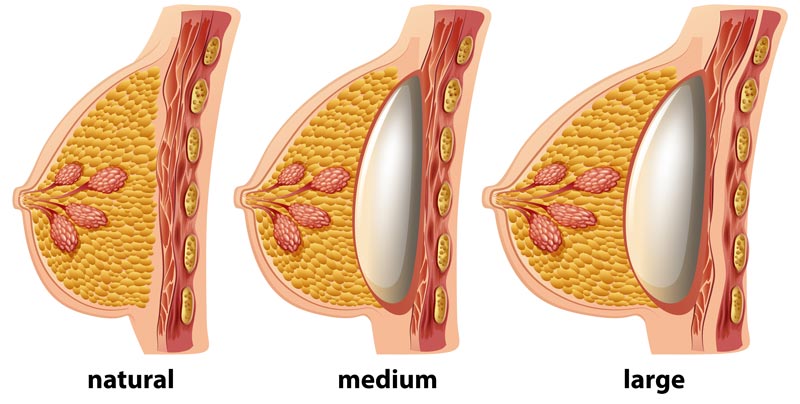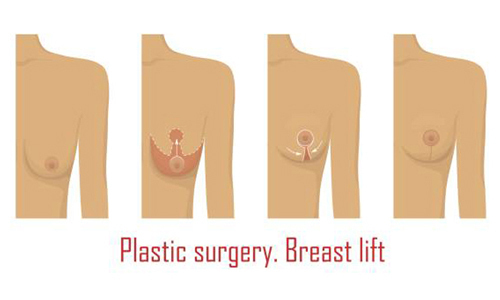Table of Contents
Everything You Need To Know About Breast Reduction Surgery: Including Lifts, Sensation, And More
Are you considering a breast reduction? If so, this article is for you! We’ll cover the different types of breast reduction surgeries available, what to expect during the procedure, and all the important aftercare information. Plus, we’ll answer some of the most common questions about breast reductions – like if a lift is included and if sensation will be affected. Keep reading to learn more!
The Basics of Breast Reduction Surgery
Breast reduction surgery is one of the most popular cosmetic procedures performed in the world.. According to the researches, over 50,000 women underwent breast reduction surgery in 2017 alone.
The procedure can be done for a variety of reasons including relief from back and neck pain, improving self-esteem and body image, and achieving better proportionality. In some cases, insurance may even cover the cost of the surgery if it is deemed medically necessary.
The first step in any breast reduction surgery is a consultation with a plastic surgeon. During this appointment, you will discuss your goals for the surgery as well as any concerns you have. The surgeon will also assess your breasts and skin tone to determine if you are a good candidate for the procedure.
If you decide to move forward with surgery, the next step is to schedule a pre-operative appointment. This appointment is typically scheduled 1-2 weeks before your surgery date and will include a physical examination, lab work, and finalizing your surgical plan.
On the day of your surgery, you will check into the hospital or surgical center where you will be given anesthesia. The type of anesthesia used will depend on the extent of your surgery but may include general anesthesia or local anesthesia with sedation.
Once you are asleep, the surgeon will begin by making incisions around the areola (the dark area surrounding the nipple) and down to the crease beneath the breast
Types of Breast Reduction Procedures
There are four types of breast reduction procedures: liposuction, skin excision, glandular tissue removal, and a combination of these methods.
Liposuction is often used to reduce the volume of fatty tissue in the breasts. This method can be used alone or in combination with other methods.
Skin excision involves the removal of excess skin from the breasts. This method can be used alone or in combination with other methods.
Glandular tissue removal involves the removal of excess glandular tissue from the breasts. This method can be used alone or in combination with other methods.
A combination of these methods may be used to achieve the desired results.
Possible Risks and Complications
There are a few risks and complications associated with breast reduction surgery, but they are typically rare and minor. The most common complication is infection, which can usually be treated with antibiotics. Other possible complications include:
– Bleeding
– Blood clots
– Poor wound healing
-Scarring
-Changes in sensation in the nipples or breasts
-Asymmetry
-Skin necrosis (death)
-Fluid accumulation
-Unsatisfactory results
Will I Get a Lift?
It’s a common question: “If I have my breasts reduced, will I need a lift?” The answer is… maybe. It depends on several factors, including the size and shape of your breasts, the amount of tissue being removed, and your goals for surgery.
If you have large, heavy breasts, a breast reduction will often involve removing not only excess tissue but also some skin. This can result in breasts that are saggy or droopy. In these cases, a lift may be necessary to improve the shape and position of the breasts.
However, if you have small to moderate-sized breasts and are only having a small amount of tissue removed, it’s likely that a lift won’t be necessary. In fact, some patients find that their breast shape actually improves after reduction surgery without a lift.
The best way to determine whether you’ll need a lift is to consult with a board-certified plastic surgeon who has experience performing breast reduction surgery. During your consultation, they will examine your breasts and discuss your goals for surgery to help you make the best decision for your unique situation.
Will I Have Sensation After Surgery?
Most patients report excellent breast sensation following surgery. In fact, many patients report that their breasts are more sensitive after surgery due to the removal of skin and breast tissue. The remaining skin is often more sensitive as it is stretched tighter over the smaller breast mound. However, there is a small percentage of patients who experience decreased sensation or even numbness in their breasts following surgery. This is usually due to the nature of the surgery and how much dissection is necessary to achieve the desired results. Additionally, some patients may have pre-existing nerve damage that can be aggravated by the surgery. Overall, however, most patients are very pleased with their breast sensation after surgery.
Postoperative Care and Recovery
After your breast reduction surgery is complete, you will be moved to a recovery area where you will be closely monitored. You will likely feel some pain and discomfort as the anesthesia begins to wear off. Your surgeon will prescribe medication to help manage any pain you may experience. Most people report excellent results with their breast reduction surgery and are very pleased with their new shape and size. Recovery times vary from person to person, but most people take approximately two weeks before feeling their best. During this time, it is important to rest and avoid any strenuous activity or heavy lifting. You should also avoid exposure to sunlight and direct heat as this can irritate your skin. Once you have fully recovered, you will be able to enjoy all the benefits of your new breasts!
Alternatives to Breast Reduction Surgery
There are a few alternatives to breast reduction surgery that you may want to consider. These include:
1. Breast Lift: A breast lift can help to improve the appearance of your breasts by making them look perkier and more youthful. It can also help to reduce the size of your areolas.
2. Breast Reduction Creams: There are a number of creams on the market that claim to help reduce the size of your breasts. However, it is important to note that these creams have not been proven to be effective and they are not FDA approved.
3. Exercise: Regular exercise can help to tone your chest muscles and make your breasts look smaller. Additionally, it can help improve your overall health and well-being.
4. Weight Loss: If you are overweight, losing weight can help reduce the size of your breasts. This is because excess fat tissue is often stored in the breasts.
5. Change in Hormone Levels: Certain hormones, such as estrogen and progesterone, can cause your breasts to grow larger. If you are experiencing this, talk to your doctor about ways to regulate hormone levels through medication or lifestyle changes.
 Conclusion
Conclusion
Breast reduction surgery is an excellent option for those who wish to reduce the size of their breasts, get a more proportionate figure and address any physical or emotional discomfort caused by disproportionately large breasts. While there may be some risks associated with the procedure, it is important to remember that the benefits often far outweigh any potential negatives. Breast reduction surgery can provide long-lasting results and improved quality of life for many individuals who choose to undergo this procedure.




